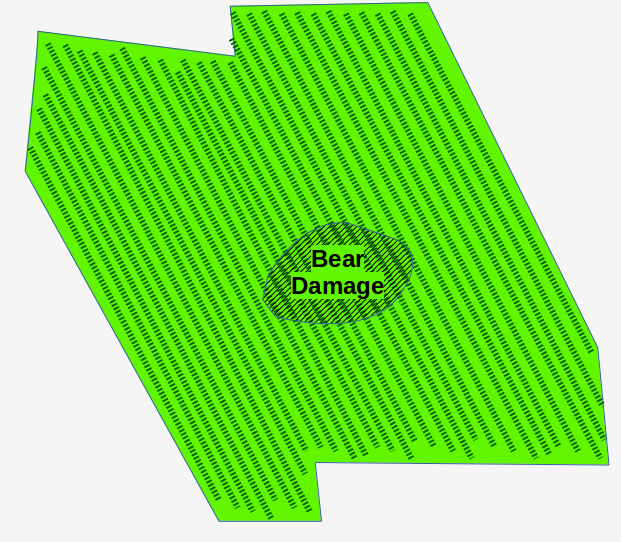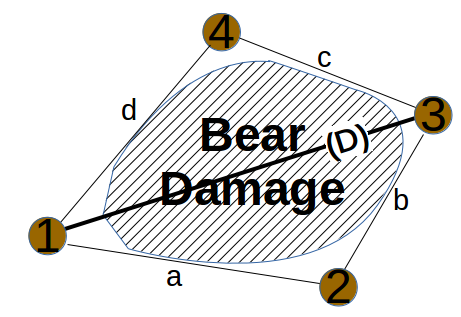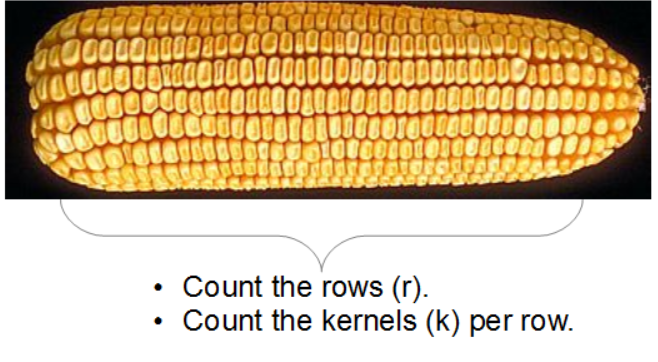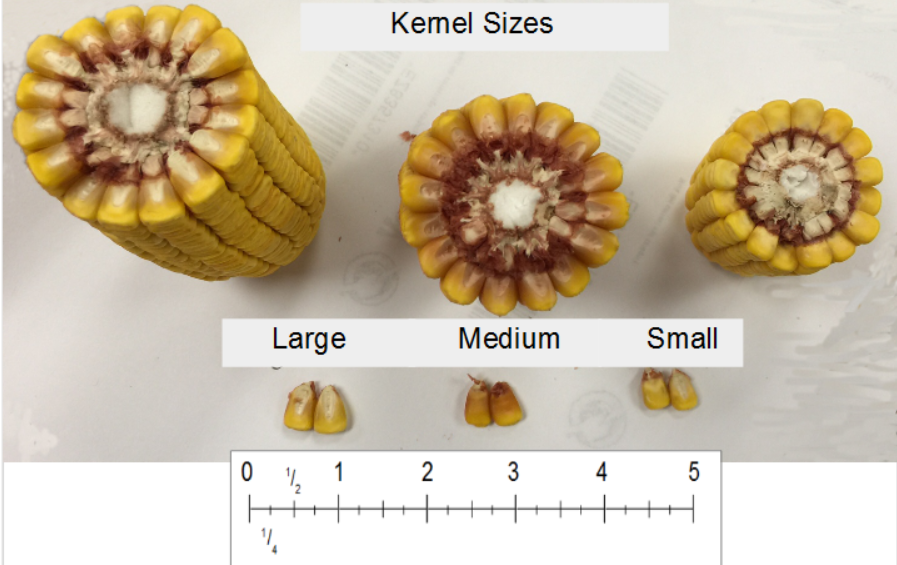Crop Damage Value Estimate
Tags | |
UUID | 5853540d-ebcc-11eb-8eb2-bc764e203090 |
Crop Damage Calculator
BEAR DAMAGE IN A FIELD
 Bear Damage Area Enlarged (below)
Bear Damage Area Enlarged (below) Wild animals and weather events damage crops. The following example is for bear damage, but the same is true for crop damage from any source (storms, flooding, man-made, or animals).
Wild animals and weather events damage crops. The following example is for bear damage, but the same is true for crop damage from any source (storms, flooding, man-made, or animals).
For example, bears get into fields of crops and in a little time produce a significant amount of damage. Some states provide compensation for animal damage, and this calculator will help assess the real dollar impact (damage) done. To use the calculator, follow the steps indicated below.
Measuring Crop Damage Value
The steps to compute the damage in real dollars is as follows:
- Measure the Area damaged with the Field Sizes in Acres function.
- Compute the Crop Value of the damaged area.
Measure Damaged Area
Animals will get into a field and knock down crops. They tend to do it in several areas, so you may have to repeat the process of measuring the area. This process lets the farmer make a conservative estimate (in the farmer's favor) of the area damaged.
- First identify the general areas of damage.
- Then put four markers (posts or poles in the ground) that will create a four sided area surrounding each significant area of bear damage. Label the corner markers 1, 2, 3 and 4. (see diagram).
- Then measure the distance between the markers along the outside. These are sides a, b, c, and d in the diagram.
- Then measure the distance between corner 1 and corner 3. This is the diagonal (D)
Make your measurement in feet, yards or meters. The calculator supports all of these units. With these measurements (a, b, c, d and D), CLICK HERE and enter your values. This will compute the four sided area. This is larger than the actual area, but not unreasonably too large. Do this for all of the significant damaged areas.
Crop Value Estimation
The value of a crop is based on the area planted, the yield per area (see USDA DATA below), and the current market price. For convenience, the current market price of corn, soybean, wheat and hay are provided below.
Market Price of Crops
|
|
|
The Corn Pricing Data can be used for the Corn Crop Value calculator, CLICK HERE.
The US Corn Pricing Survey is for No.2 Shelled Corn
USDA DATA
Corn Yield
In the U.S. Department of Agriculture Crop Production 2020 Summary report, the following information on Yield per Acre
Crop Yield
Estimated Corn Yield
To estimate the yield potential of the damaged area, we need to compute the approximate bushels per acre in this part of your field. To do this:
- Compute the length of a row that is a 1,000th acre sample.
- Take a Sample to compute an average.
- Estimate the Size of your Kernels
- Compute the yield of the damage area.
Compute the 1,000th acre sample
Next to the bear damage area, measure the width of the rows of corn. Use the width (separation) of the rows and CLICK HERE. This will tell you how long in the row is a 1,000th acre sample that will be used to estimate the bushels per acre in the bear damage area. For example, your rows could be 30", and a 1,000th acre sample would be 17.4 feet long. ROWS of KERNELS

Take a Sample
- Walk along the sample row and count the number of ears of corn within the 1,000th acre sample. (e.g. 30 ears).
- Then, go back through the row and pick five ears.
- Count the kernels on each ear. CLICK HERE for a simple calculator to compute the kernels base on the rows and kernels per row.
Estimate the Size of Kernels
Look at the kernels in the sample ears and make a rough gauge on the size of the kernels. Use the diagram as a guide if needed. These are used to estimate the thousands of kernels per bushel. Large kernels require fewer kernel to reach a bushel (80,000), Medium kernels require 90,000 to fill a bushel and small kernels require 120,000 kernels to make a bushel.
Compute the Yield
Use the number of ears in your 1,000th acre sample, the kernels per ear in your five ears and the approximate size of your kernels, CLICK HERE to compute the estimated yield in the bear damaged area. For example, let's assume medium kernel sizes, and a five ear sample of (512, 466, 502, 470, and 499), and 30 ears of corn on our 1,000th acre sample. Combine these numbers with 0.15 acres of damage, and we have a loss of 24.48 bushels of harvested corn.
Crop Value
Now that you have an approximation of the bushels of corn destroyed by the bears, there's one last step: calculating the value. Fortunately grain futures, such as corn, are available on the open market. At the time of this writing the USDA estimated a high value of corn to be $3.70 per bushel. Use your volume of crop loss (e.g. 24.48 bushels) and the trading value of the corn (e.g. $3.70), and CLICK HERE. This will compute the total loss due to bear damage. In our example, it was $90.58.
Calculators and Collections
Equations
- Four Sided Field Size Acres KurtHeckman Use Equation
- Crop Value Estimation KurtHeckman Use Equation
- Five Sided Land Size KurtHeckman Use Equation
Datasets
- Comments
- Attachments
- Stats
No comments |
